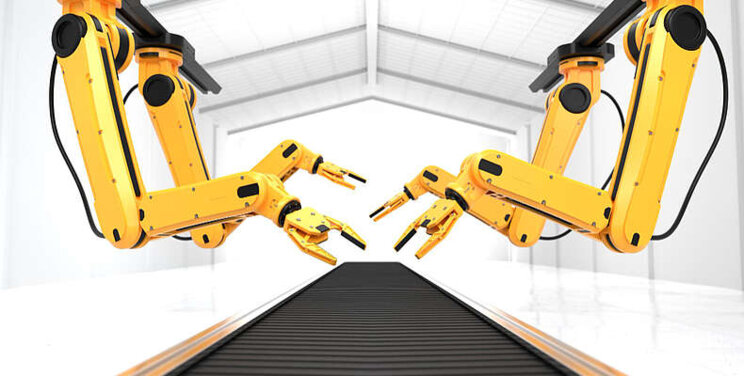Are indoor vertical farms really 'future-proofing agriculture'?
Added on 23 August 2022

At a hyper-controlled indoor farm in industrial South San Francisco, four robots named John, Paul, George and Ringo carefully transfer seedlings from barcoded trays into 15-plus foot towers that are then hung vertically inside a 4,800 sq ft grow room.
Inside the hygienic space, which is operated by the indoor farming company Plenty, there's no soil, sunlight or tractors, but rows of hanging crops illuminated by colorful LED lights and carefully monitored by cameras, sensors and artificial intelligence. Once a tower is ready to be harvested, a balletic automated process reminiscent of a dry cleaner's conveyor belt begins.
A robot named Garfunkel (a nearby counterpart is called Simon) gently grabs and turns the tower on its side before setting it down to be trimmed by a machine. Workers in navy branded jumpsuits inspect the greens for any defects, but there are almost none. Then the pesticide-free product is packaged and put on a truck to be delivered to a local market where the customer becomes the first person to touch it.
Welcome to the world of indoor vertical farming, which, depending on who you ask, will revolutionize the future of agriculture in a warming world, or is a problematic climate solution due to its high energy costs.
"We're moving into an age where climate change is changing what we grow and how we grow it," said Nate Storey, Plenty's co-founder and chief science officer. "Ultimately, I think we're future-proofing agriculture for our species."
With the world's population expected to reach nearly 10 billion by 2050, most of whom will be living in cities, experts say it will require a 70% increase from current levels of global food production. But with agricultural land in short supply thanks to climate crisis and urbanization, it's clear today's food systems are not ready.
Photo created by user6702303 - www.freepik.com
Source: Agritech Future
More news















